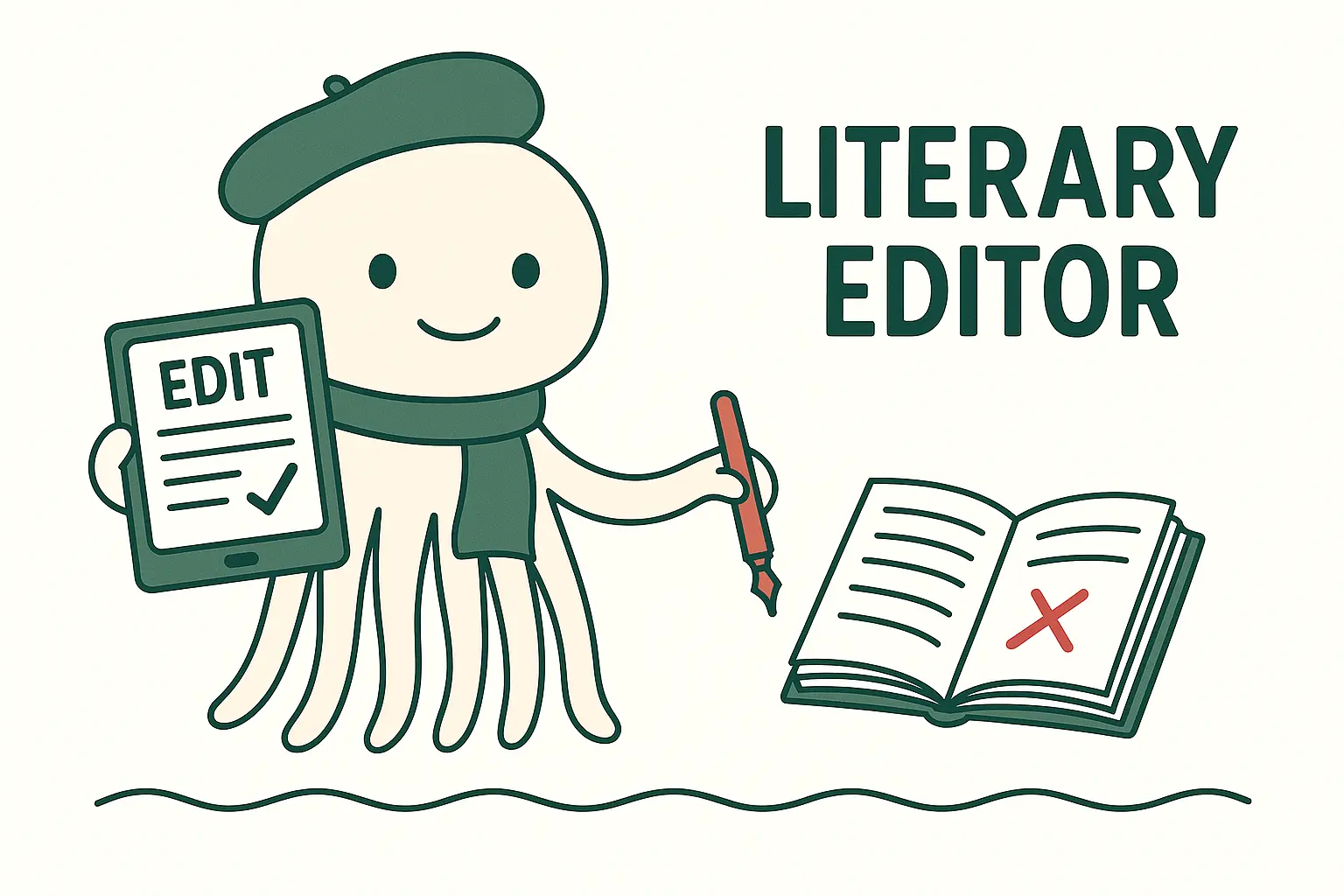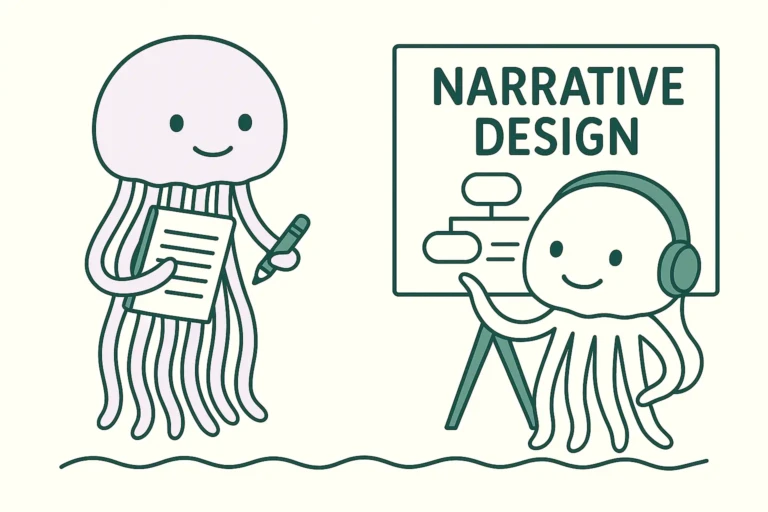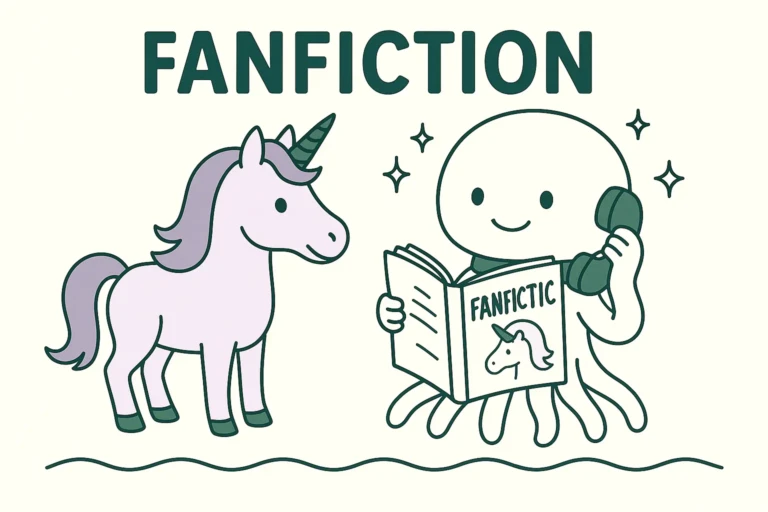10 ChatGPT Prompts for Literary Editors
Editing is where good writing becomes great.
As a literary editor, you fine-tune voice, structure, clarity, and pacing — all while preserving the writer’s intent.
These 10 ChatGPT prompts are designed to help you speed up your workflow, analyze manuscripts more efficiently, and offer clear, constructive feedback.
Whether you’re editing fiction, nonfiction, or poetry, these prompts will support your critical eye and editorial instincts.
Let’s elevate great writing — one prompt at a time.
1. Summarizing a Manuscript Quickly
#CONTEXT: You’ve received a full manuscript and need a quick overview before reading it in detail.
#GOAL: Generate a 3–5 sentence summary of the manuscript.
#RESPONSE GUIDELINES:
Paste the first 3–5 pages or chapter
Ask for tone, genre, and themes
Use voice: [insert tone — objective, friendly, etc.]
Highlight main plot points and characters
#OUTPUT: A brief manuscript summary.ChatGPT Output
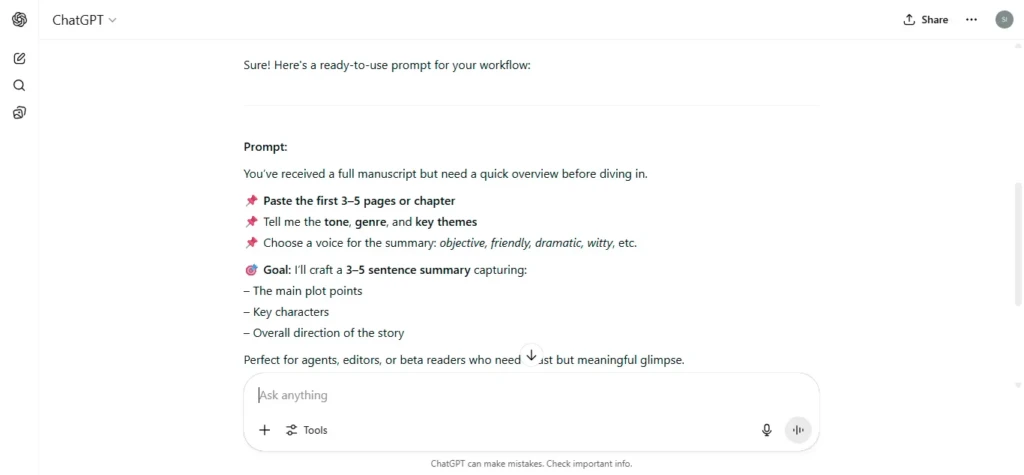
2. Providing Constructive Feedback on a Scene
#CONTEXT: You need to provide editorial feedback on a specific scene from a manuscript.
#GOAL: Offer helpful critique in a professional tone.
#RESPONSE GUIDELINES:
Paste scene: [insert scene]
Ask ChatGPT to analyze pacing, character actions, and clarity
Suggest improvements without rewriting
Keep tone: [insert tone — helpful, concise, supportive]
Target: [insert genre or age group]
#OUTPUT: A short editorial feedback paragraph.3. Checking for Repetitive Language
#CONTEXT: You suspect the author is repeating certain words or phrases too often.
#GOAL: Identify word/phrase repetition within a section.
#RESPONSE GUIDELINES:
Paste the manuscript section
Ask for a list of repeated words/phrases (3+ times)
Include suggestions for variation
Fit tone: [insert tone]
Focus on: [insert focus — verbs, adjectives, phrases]
#OUTPUT: List of repeated terms with notes.ChatGPT Output
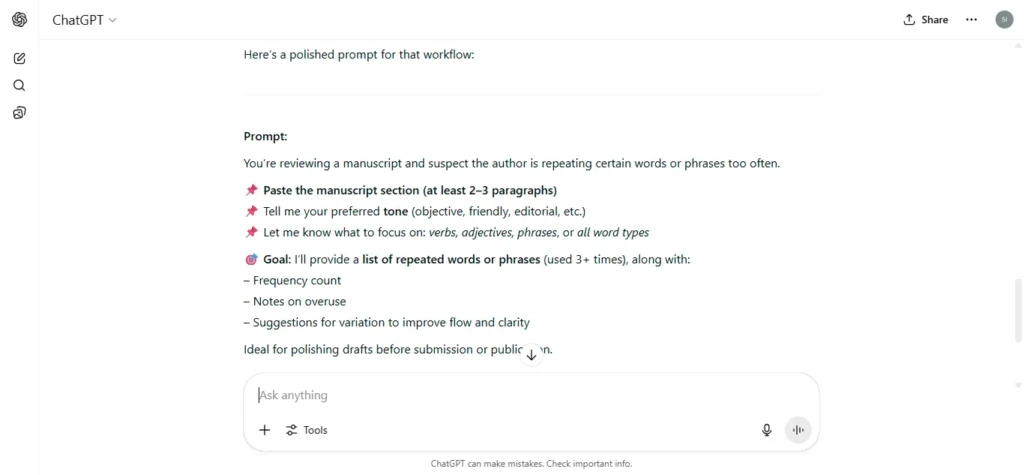
4. Analyzing Character Development
#CONTEXT: You want to check if a character is growing or changing effectively through the story.
#GOAL: Evaluate character progression and consistency.
#RESPONSE GUIDELINES:
Character name: [insert name]
Paste scenes from early, mid, and late story
Ask to identify emotional or psychological growth
Tone: [insert tone]
Fit genre: [insert genre]
#OUTPUT: A brief analysis of character arc.5. Suggesting a Stronger Chapter Title
#CONTEXT: You want to check if a character is growing or changing effectively through the story.
#GOAL: Evaluate character progression and consistency.
#RESPONSE GUIDELINES:
Character name: [insert name]
Paste scenes from early, mid, and late story
Ask to identify emotional or psychological growth
Tone: [insert tone]
Fit genre: [insert genre]
#OUTPUT: A brief analysis of character arc.ChatGPT Output
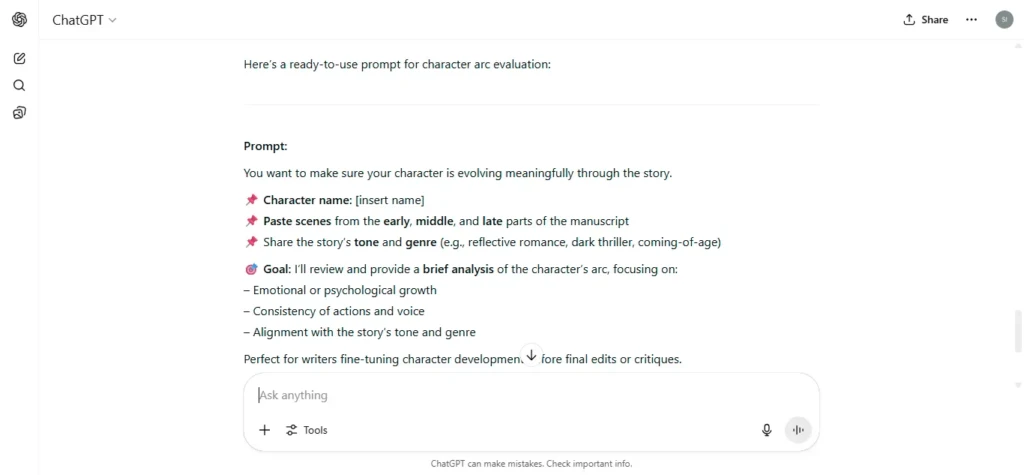
6. Tightening Dialogue
#CONTEXT: You’re reviewing a conversation between characters and want to make it more natural and snappy.
#GOAL: Edit dialogue for pacing and realism.
#RESPONSE GUIDELINES:
Paste dialogue
Ask for edits that reduce wordiness
Preserve character voice and tone: [insert tone]
Suggest better pacing, pauses, or beats
Target genre: [insert genre]
#OUTPUT: A tighter, more natural version of the dialogue.7. Flagging Passive Voice in a Chapter
#CONTEXT: The writing feels distant or flat, and you want to identify passive voice issues.
#GOAL: Highlight and explain all uses of passive voice.
#RESPONSE GUIDELINES:
Paste excerpt or chapter
Ask for a list of all passive constructions
Suggest ways to rewrite into active voice
Fit tone: [insert tone — direct, technical, warm]
Emphasize verbs and sentence flow
#OUTPUT: List of flagged sentences + suggested fixes.ChatGPT Output
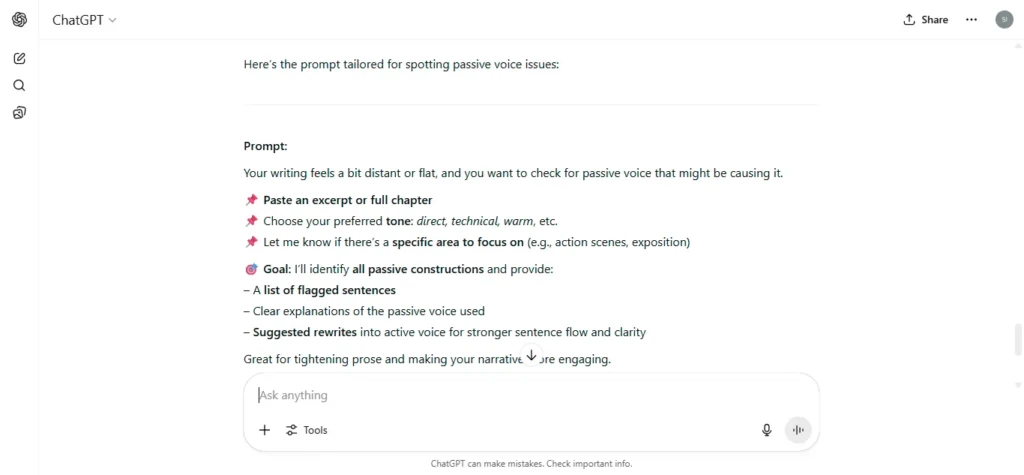
8. Rewriting a Blurb or Back Cover Summary
#CONTEXT: You’re helping an author revise the back cover text of their book.
#GOAL: Write a more compelling, marketable blurb.
#RESPONSE GUIDELINES:
Paste current blurb or summary
Ask for 2 revised versions: one dramatic, one literary
Match tone: [insert tone]
Fit genre: [insert genre]
Keep it under 150 words
#OUTPUT: Two new back cover blurbs.9. Assessing Theme Clarity
#CONTEXT: You want to make sure the manuscript clearly expresses its central themes.
#GOAL: Identify the main theme(s) and how well they’re supported.
#RESPONSE GUIDELINES:
Paste a key chapter or summary
Ask to identify central message or recurring motifs
Tone: [insert tone]
Fit genre: [insert genre]
Suggest 1–2 ways to enhance theme delivery
#OUTPUT: A short theme analysis.ChatGPT Output
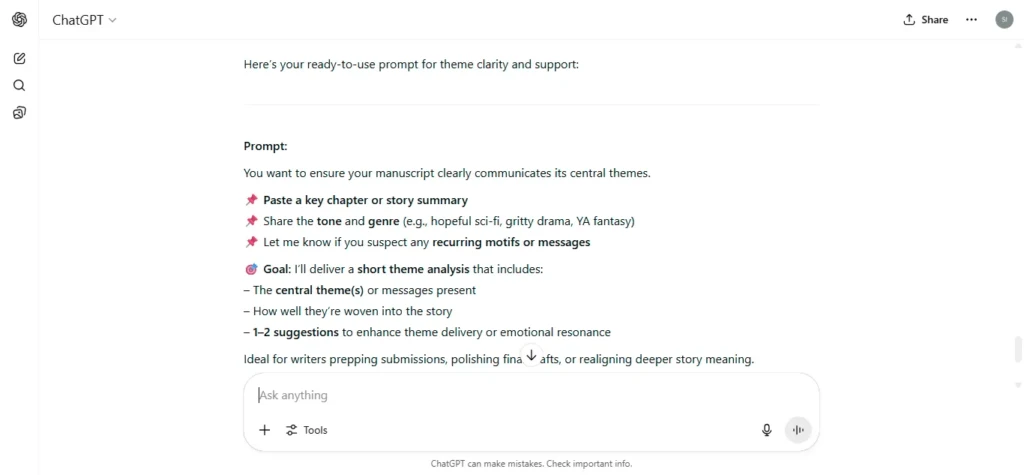
10. Creating a Manuscript Feedback Letter
#CONTEXT: You’ve finished editing a manuscript and need to write a professional, encouraging feedback letter.
#GOAL: Summarize strengths, areas for improvement, and overall comments.
#RESPONSE GUIDELINES:
Paste editing notes or bullet points
Ask for tone: [insert tone — supportive, direct, friendly]
Fit audience: [insert author experience level]
Keep under 300 words
#OUTPUT: A full editorial feedback letter.How to Use These Prompts Effectively
Tailor the Inputs: Fill in tone, genre, and document type for better results.
Layer Prompts: Use multiple prompts on the same chapter to check flow, theme, and clarity.
Use for Coaching Authors: Adapt responses into teaching moments during feedback.
Speed Up Your Workflow: Use AI to draft summaries or feedback, then personalize them.
Keep a Prompt Toolkit: Save your most useful variations for each editing project.
Wrap-Up
Great editing is invisible — but powerful.
These ChatGPT prompts help you work faster, think clearer, and give authors your best.
Let AI handle the groundwork so you can focus on what matters most: shaping unforgettable stories.

